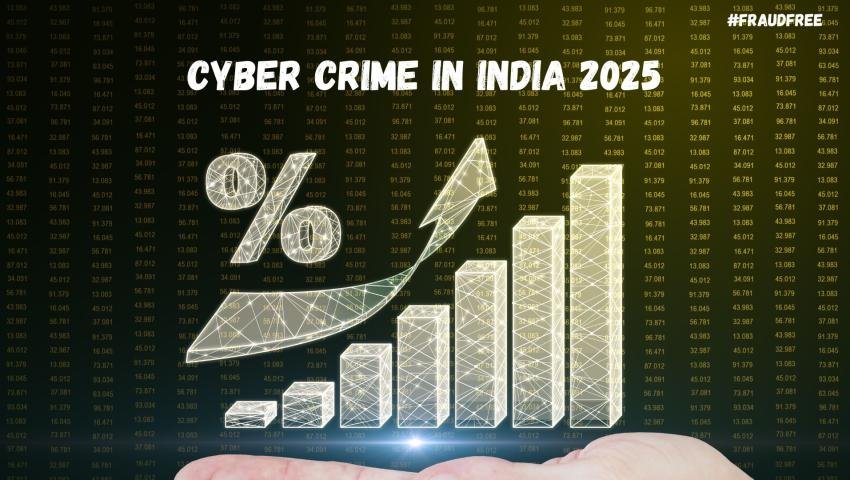
Real Cyber Crime Cases in India That Shocked the Nation
Cybercrime in India has grown rapidly in recent years — from online scams to high-profile data breaches. Each case reveals how digital threats can impact millions and why cyber awareness, strong law enforcement, and digital hygiene are critical in 2025.
Let’s look at some of the most shocking real cybercrime cases in India, what happened, and what we can learn from them.
🕵️♂️ 1. The Cosmos Bank Cyber Heist (2018)
Location: Pune, Maharashtra
Loss: ₹94 Crore
In one of India’s largest banking cyberattacks, hackers infiltrated Cosmos Co-operative Bank’s servers and stole debit card data. Using malware, they cloned ATM cards and conducted withdrawals from 28 countries within hours.
- 💻 Attackers used malware on the bank’s switch server to approve fake transactions.
- 🏦 Over ₹78 crore was withdrawn abroad, while ₹2.5 crore was stolen via ATMs in India.
Lesson:
Even strong banking systems can be breached if internal security monitoring and network segmentation are weak. Regular audits, employee awareness, and advanced intrusion detection are essential.
💳 2. SBI Data Leak (2019)
Location: Mumbai (affecting customers nationwide)
Impact: Data of 3 million SBI customers exposed
A security researcher discovered that an unprotected server of the State Bank of India exposed banking data, account numbers, and balances without any password protection. The data was linked to SBI’s “SBI Quick” service.
Lesson:
Even minor configuration errors can lead to massive breaches. Always secure servers with proper authentication, encryption, and vulnerability testing.
📱 3. Jamtara Online Fraud Network
Location: Jamtara, Jharkhand
Timeline: 2015–Present
The small town of Jamtara became infamous as India’s “Phishing Capital.” Criminals called victims pretending to be from banks or telecom companies and tricked them into revealing OTP and card details, draining bank accounts.
- 📞 Most victims were ordinary citizens unfamiliar with digital banking.
- 👮♂️ Multiple police raids have since arrested hundreds, but similar scams still occur across India.
Lesson:
Social engineering remains the easiest form of cyberattack. Public awareness and digital literacy are more important than any technical defense.
🏦 4. Yes Bank and ATM Malware Case (2018)
Location: Kolkata & Mumbai
Loss: Approx ₹2.8 Crore
Hackers deployed ATM malware in collaboration with insiders to manipulate bank servers. Money was withdrawn from ATMs in multiple locations simultaneously using cloned cards.
Lesson:
Insider threats and compromised ATMs highlight the need for real-time fraud detection, network segmentation, and regular patching of ATM systems.
🧠 5. AIIMS Ransomware Attack (2022)
Location: New Delhi
Impact: 30M+ patient records affected
The All India Institute of Medical Sciences (AIIMS) faced a major ransomware attack that crippled its digital systems for nearly two weeks. Patient data, lab reports, and appointments were inaccessible.
- 🦠 Attackers demanded ransom in cryptocurrency.
- 🏥 Services had to be restored manually, causing massive disruption.
Lesson:
Critical infrastructure like hospitals must implement strong network isolation, offline backups, and 24/7 monitoring. Cyberattacks on healthcare can directly endanger lives.
💰 6. Paytm KYC Fraud (2020–2023)
Location: Pan-India (via phone & SMS scams)
Fraudsters posed as Paytm executives and tricked users into sharing OTPs or installing remote-access apps like AnyDesk under the pretext of KYC updates. Victims then lost money from linked accounts.
Lesson:
Never share OTPs, and avoid installing apps via unsolicited links. Companies never request remote access or personal banking details over the phone.
🕸️ 7. BSNL Malware Breach (2020)
Location: India-wide BSNL broadband network
Impact: 2,000+ routers infected
Attackers targeted BSNL broadband modems by exploiting weak default passwords. The attack disrupted internet services across several cities.
Lesson:
Change default passwords on routers and IoT devices. Network operators should enforce stronger firmware updates and user authentication policies.
💻 8. Airtel SIM-Swap Fraud (2021)
Location: Hyderabad
Loss: Over ₹4 Crore
Cybercriminals cloned SIM cards by bribing telecom employees, intercepted OTPs, and accessed victims’ bank accounts.
Lesson:
Enable email-based transaction alerts, lock your SIM with a PIN, and report signal loss immediately. Always confirm identity changes directly with your telecom provider.
🎭 9. Bengaluru Crypto Investment Scam (2021)
Location: Bengaluru
Loss: ₹70+ Crore
A fake cryptocurrency investment platform promised high returns. Thousands invested using UPI and wallets, only for the site to vanish overnight.
Lesson:
Never invest in unverified online schemes. Always verify domain authenticity and avoid links shared via social media or WhatsApp.
🔐 10. Pune Tech Firm Employee Data Theft (2023)
Location: Pune
Incident: Ex-employee stole client data from a tech company’s CRM system before resigning and sold it on the dark web.
Lesson:
Implement role-based access control (RBAC), data loss prevention (DLP) tools, and account disablement immediately upon employee exit.
⚠️ Bonus: The Rise of Deepfake & Sextortion Scams (2024–2025)
In recent years, AI-powered deepfakes have led to new kinds of cybercrimes — fake videos used for blackmail, misinformation, and extortion. Victims are targeted via social media or video calls, with manipulated visuals used to demand money.
Lesson:
Never respond to blackmailers. Contact cyber police immediately. Always verify source authenticity before sharing or reacting to online media.
🧠 Key Takeaways from These Cases
- Cybercrime can target anyone — from individuals to major organizations.
- Human error (phishing, weak passwords, insider threats) is often the root cause.
- Regular audits, public awareness, and strong legal enforcement are essential.
- India’s IT Act 2000 and CERT-In (Indian Computer Emergency Response Team) are central in investigating and preventing cybercrimes.
🛡️ How to Protect Yourself
- Use strong, unique passwords with a password manager.
- Enable two-factor authentication (2FA) on all accounts.
- Stay alert to phishing emails or calls demanding personal info.
- Avoid public Wi-Fi for banking or sensitive transactions.
- Regularly update your devices and antivirus software.
- Report incidents immediately to the National Cyber Crime Reporting Portal .
⚖️ Final Thoughts
These real cases show that cybercrime isn’t just a digital problem — it’s a national issue impacting banks, hospitals, businesses, and ordinary citizens.
The best defense is awareness, vigilance, and smart cybersecurity habits.
Stay informed. Stay secure.
Mrityunjay Singh
Leave a comment
Your email address will not be published. Required fields are marked *

